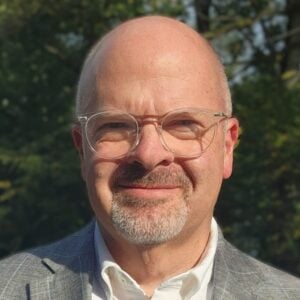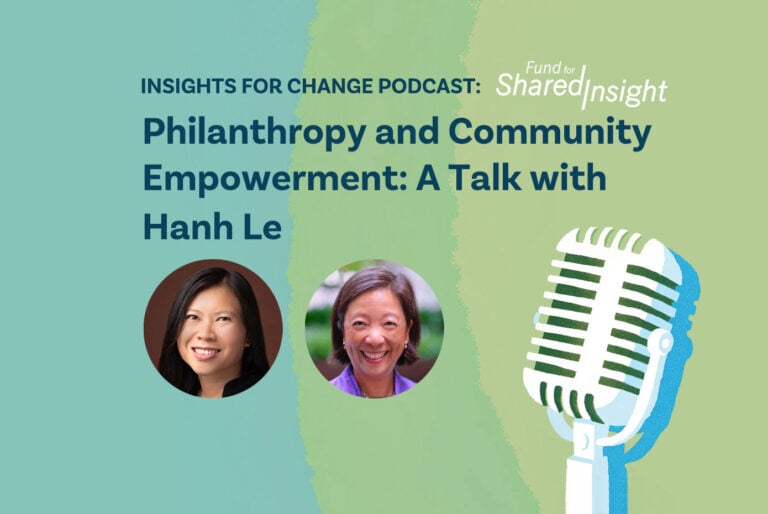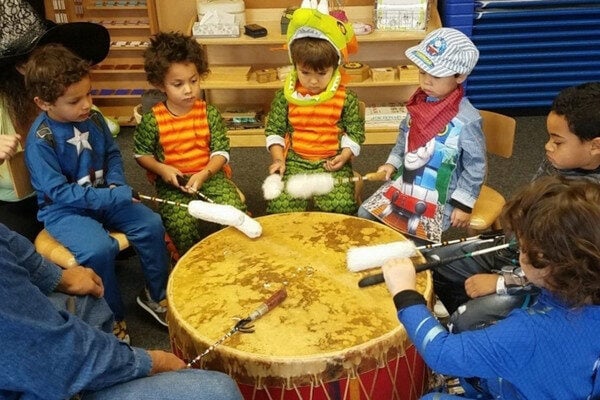In his widely read and frequently cited book on the power of inquiry, “A More Beautiful Question,” author Warren Berger explores the transformative potential of asking questions that are bold, open-ended, and rooted in curiosity. He argues that these “beautiful questions” are a gateway to meaningful listening, creativity, and connection. Asking questions and being curious aren’t just a best practice for philanthropy, they are essential. Berger shows how they help us close the distance between the questioner and the social problem we hope to solve.
As we worked together on a recent review and commentary on the 10th anniversary edition of Berger’s book, this insight resonated for us. We began reflecting on the kinds of questions we’ve heard funders ask, and the ways in which tone, framing, and timing can either invite honesty or shut it down. We realized that effective questions are an overlooked but critical first step in the listening journey, and that they must be framed, prepared, and vetted even before the conversations begin.
If funders want to build authentic relationships with the communities they aim to serve, they must begin by acknowledging the distance that currently exists. Bridging that distance requires curiosity, humility, and vulnerability. It means asking questions that don’t just solicit information, but invite collaboration and trust.
But not every question creates that opening to relationship building. Consider this contrast:
“What are your biggest day-to-day problems?” vs.
“What barriers are you facing that keep you from fulfilling your potential?”
The first question may come across as deficit-focused or even condescending. The second, though still direct, frames the respondent as capable and worthy. It subtly signals that you see their strength and are interested in walking alongside them — not diagnosing them.
Funders who want honest answers must ask honest questions, and do so with humility and gratitude. That includes paying attention to tone and phrasing, checking for unintended bias or paternalism, and being explicit about wanting to hear the truth — not the polished version. It also means framing yourself as a learner and partner, not an expert.
Many funders face roadblocks to listening. Large foundations may be constrained by procedures that make direct exchange difficult. Smaller ones may feel they lack the capacity to organize listening sessions or engage meaningfully with grantees and communities.
But the first step isn’t logistics. It’s intent. Ask yourself:
- What do I want to learn?
- Why does it matter to me?
- Am I willing to be challenged by the answers
- What will I do with what I hear?
That last question is especially important. Communities often ask, “Will this go anywhere?” A meaningful question signals that you’re not just gathering insights —you’re prepared to act on what you learn.
A recent piece from Fund for Shared Insight, Listening for Possibility in Times of Crisis, explores this further, highlighting how thoughtfully framed questions can open up possibility and help us imagine a different future. It’s a helpful companion to our reflections here.
The questions we ask matter
Listening isn’t a transaction — it’s a relationship. And relationships work best when there’s mutuality. Community members have questions too, often profound ones about their own future and their place in a complex system.
One powerful approach: invite people to reflect on the questions they are asking. For example:
- “What questions do you wish you had the answers to?”
- What are the hardest conversations you’re having in your community?”
- What do you hope we’ll stay curious about, even when it’s difficult?”
This approach creates a shared sense of inquiry. It affirms that no one has all the answers, and that the work of listening and making meaning must be done together.
True partnership begins when we relinquish control over the conversation and walk alongside others into the unknown. Listening isn’t passive — it’s active, deliberate, and sometimes uncomfortable.
Listening as relationship, not transaction
From our experience working with funders and nonprofits across the country, we offer some reflections that might help guide your listening journey.
- Listening works best when you do more of it than talking. Avoid dominating the conversation with your own frameworks or solutions. Instead, repeat back what you heard and check for understanding — it’s a simple but powerful way to affirm the speaker’s experience.
- Be cautious of jumping too quickly to solutions. The goal is not to fix everything in the moment, but to build enough trust that truth-telling becomes possible. One individual usually doesn’t have all the answers. Berger writes, “Collaborative inquiry begins with asking others, Do you find this question as interesting as I do? Want to join me in trying to answer it?”
- Respect cultural context. Don’t go it alone — partnering with peer funders or community-led intermediaries can make deep listening more feasible and sustainable.
- No matter how carefully you frame your questions, some conversations will be difficult. Tensions will emerge. So will emotion. And that’s okay.
- The power dynamic in philanthropy didn’t emerge overnight, and it won’t shift overnight either. Listening well means staying present when it’s hard, staying curious when you feel defensive, and staying open even when the answers hurt. But it also means you’ll encounter moments of profound insight and unexpected possibility.
Want to listen better?
Nonprofit leader Courtney Harrness recently shared on LinkedIn what he described as the most effective community partnership he had ever witnessed — not one that began with a proposal or press release, but with a simple question from a funder: “What are you hearing that we’re not?” That question shifted the dynamic immediately. It positioned the community partner not as a recipient of charity but as a guide. It created space for truth-telling and innovation. As Harrness put it, “Listening is the foundation. Alignment is the outcome. Belonging is the result.”
Want to listen better? Want to build trust? Start by asking a better question. Then stop talking — and listen.
About the authors:

Marshall H. Ginn









